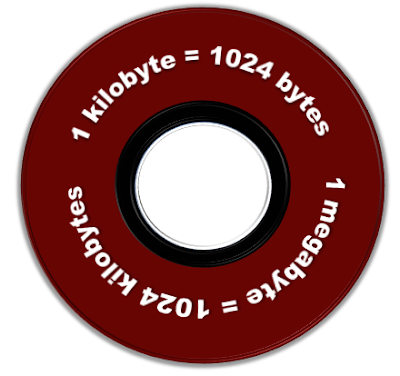The kilobyte is the measurement unit for digital information, which
internationally is symbolized as KB .
According to
International System
of Units (SI) , Kilo- is the prefix means 1000 so it is commonly considered
as 1 kilobyte = 1000 bytes, but in Information technology’s areas in reference to digital memory capacity, 1 kilobyte = 1024 bytes . It was once common to find Hard disks, Magnetic storage
media, Processor cache size, SD
memory chip, an iPhone memory chip capacity and RAM capacities
measured in terms of kilobytes, but the larger megabyte has
now become a more prominent capacity.
Kilobytes are often used to
measure the small files size. For
example, thumbnail images use only 5 to 10 KB of space. A larger JPEG image of 900x600 pixel can take up to 250 KB of space.
Text files often are less than 1KB. While some files contain less than 4 KB
data, as in modern file systems such as NTFS (Windows) and HFS+ (Mac) have a cluster size of 4 KB.
Most documents saved on computer might be between 1 and 1,024KB. Anything
larger than 1,024KB is measured in megabytes (MB) .

Comments
Post a Comment